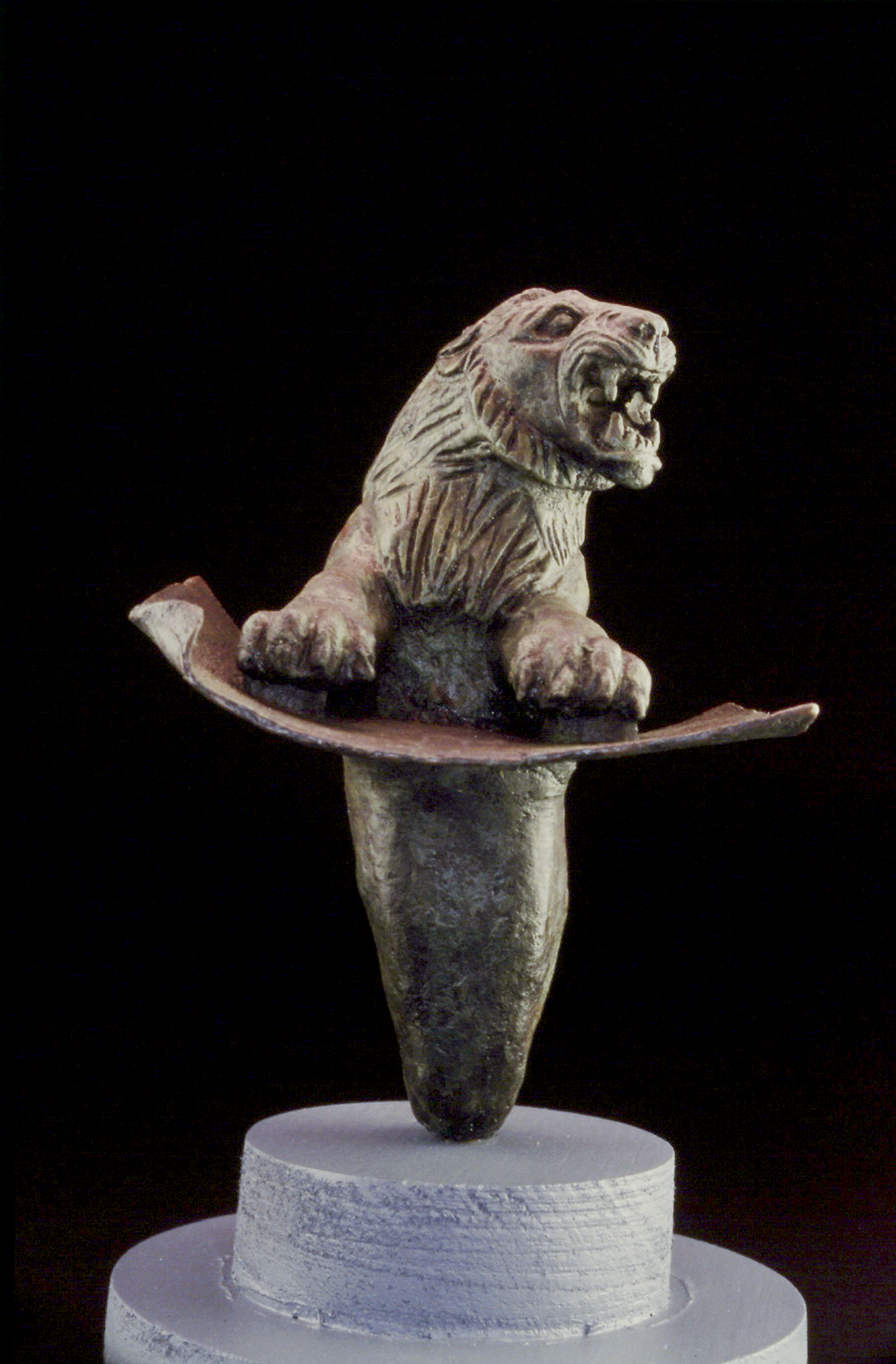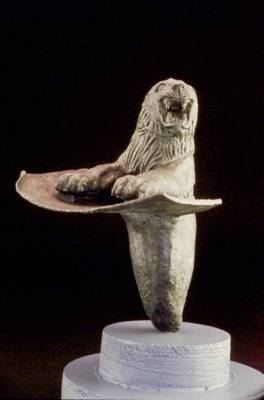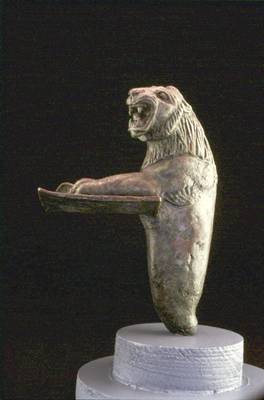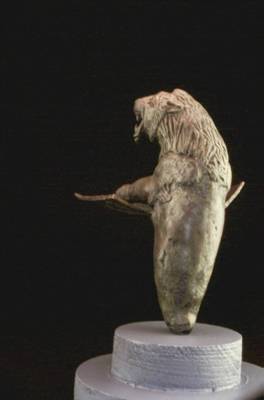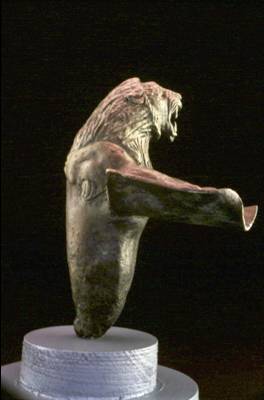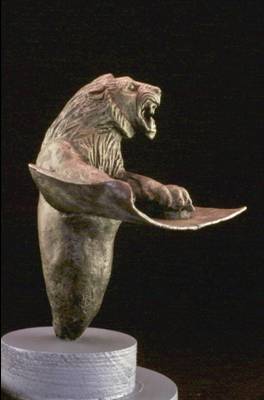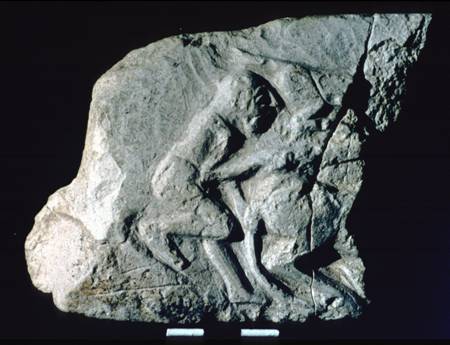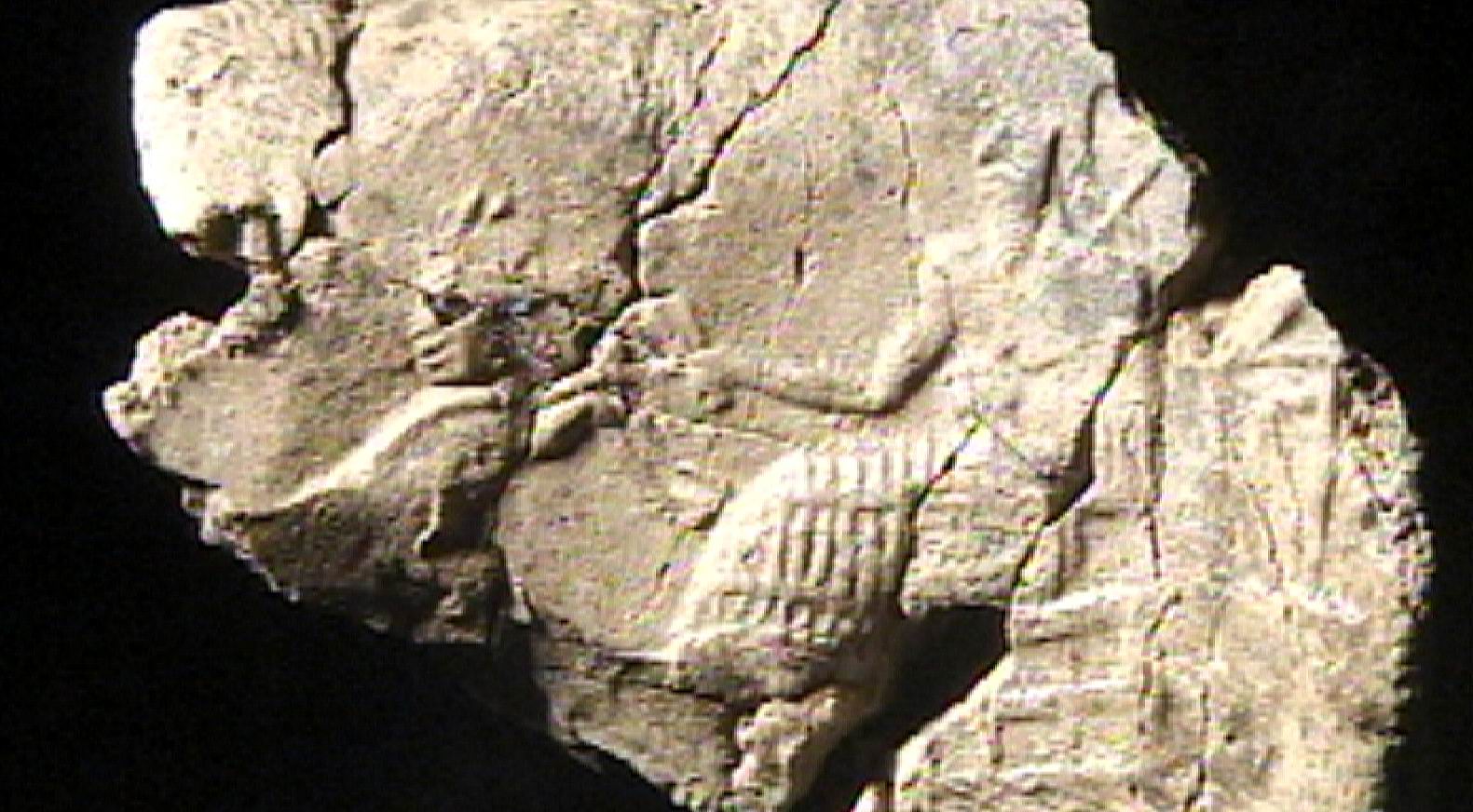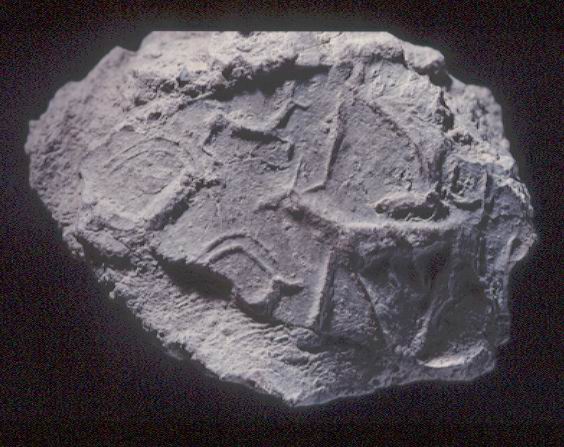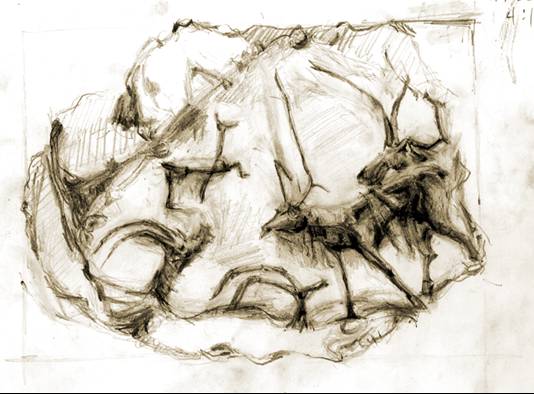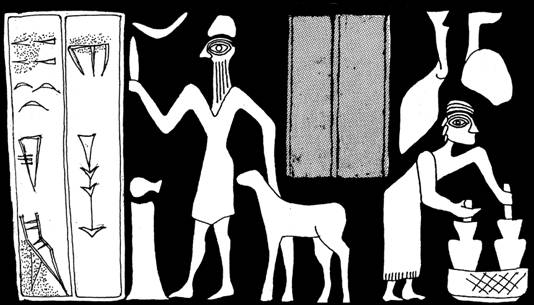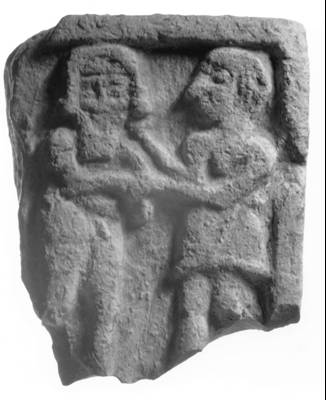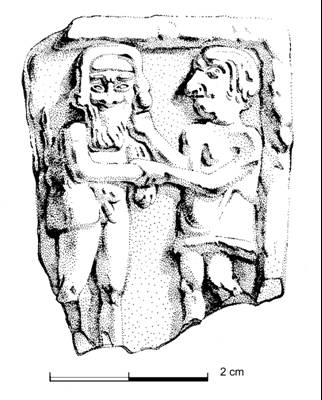Frontality
Hurrian art at Urkesh experiments with an innovative way to render the way in which the viewer aligns himself with the main axis of a subject presented as a sculpture in the round.Full frontality
The lion of Tish-atal in the Louvre has the classical frontal posture that we find in all Sumerian sculpture in the round. There is a single axis along which the face, the body, the paws of the lion are aligned. The plaque and the stone tablet are also aligned in the same direction.
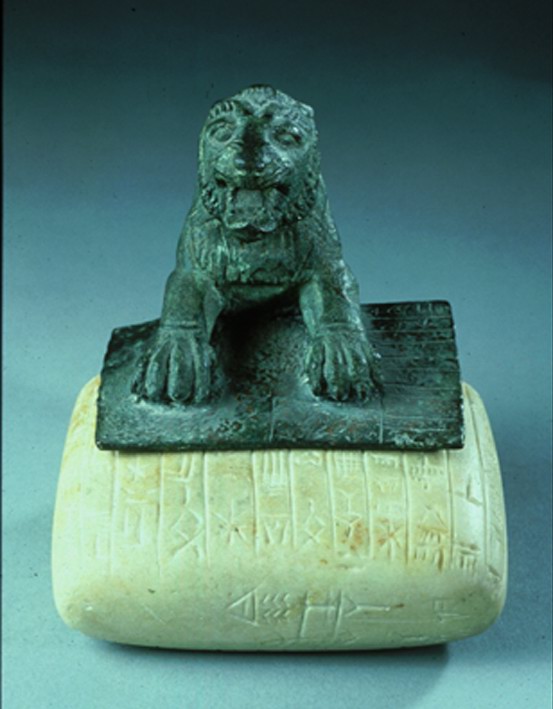
The lion of Tish-atal which is today in the Metropolitan has a posture which is quite in contrast with that of its twin in the Louvre. The face is aligned along an axis which is oblique to that of the body, the paws and the plaque. This creates a dynamism which is quite innovative for Syro-Mesopotamian sculpture in the round.
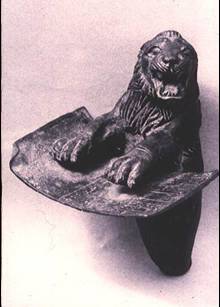
To provide good photographic documentation of this double frontality, we offer here a sequence of views from all angles, rotating clockwise. As an experiment, the photographs you see here are of a copy of the Metropolitan lion. As the lion turns, ask yourself which is the main axis?
The sequence of photographs was taken by Armand J. Fulco.
